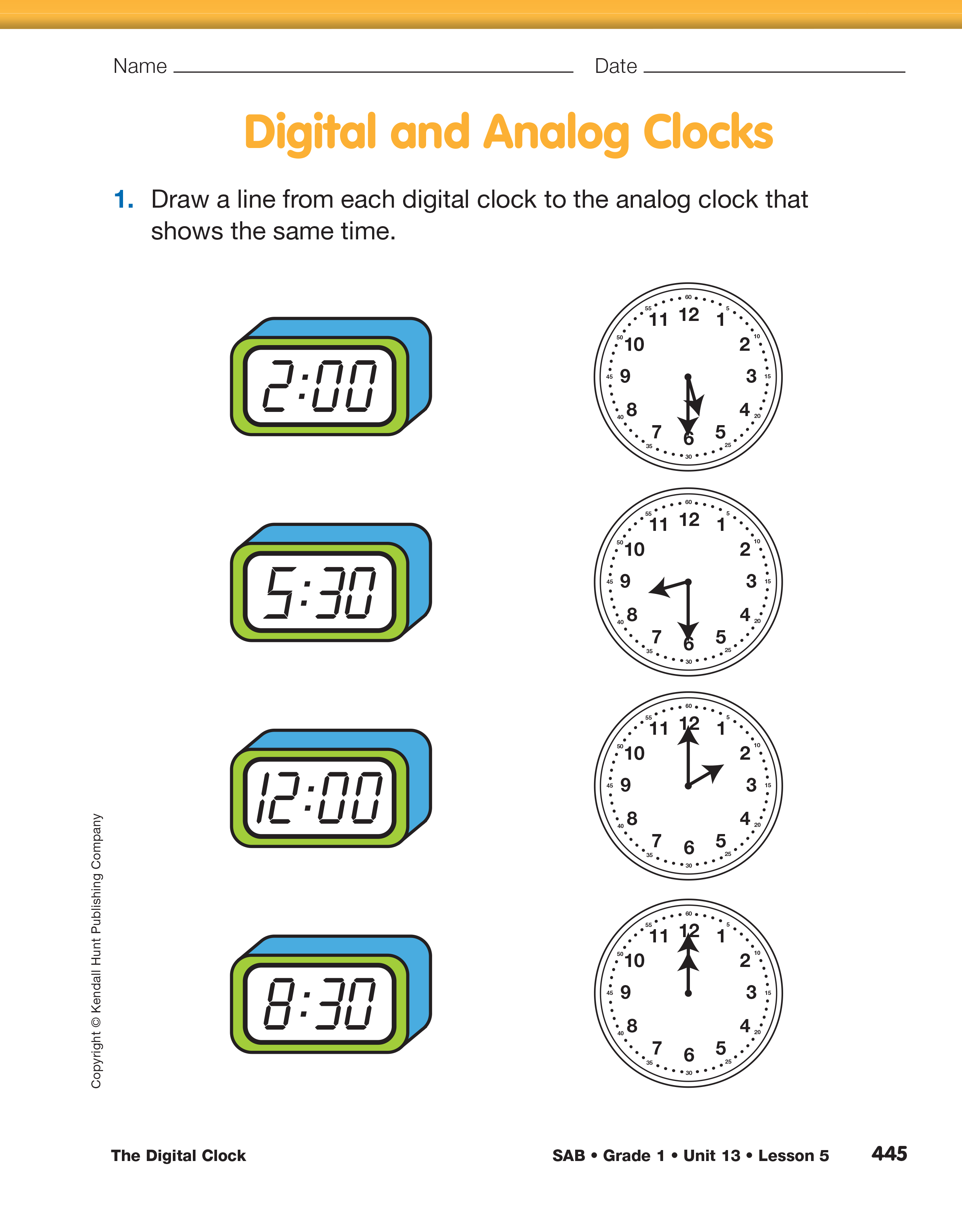The Digital Clock
Est. Class Sessions: 2Developing the Lesson
Tell Time on an Analog Clock. Begin this lesson with a quick review of telling time on an analog clock. Direct students to use their individual clocks to show 3:30. Have them compare the time on their clock with that of a partner.
Ask:
Write the notation 3:30 on a display and remind students that this is one of the ways that you write three-thirty. Remind students that the first number tells you the hour and the number after the colon tells you the number of minutes the minute hand has moved after the hour. Write the notation 4:00 on the display but do not tell students what time you have written. Ask them to read the time to themselves and set their individual clock to show that time. Have each student compare the time on his or her clock with that of a neighbor and explain how he or she decided where to set each hand on the clock.
After students have had a chance to
share, ask:
Repeat this activity displaying times to the nearest hour and half hour. After students compare their times with a partner, use similar questions to prompt discussion.
Introduce Digital Clocks. Remind students that up until now they have been practicing telling time using an analog clock. Ask them to think about other kinds of clocks they have seen. Tell them that you are going to share a book about time. Read the book Telling Time by Jules Older. This book begins by explaining why we need to tell time. It then explains different measures for time, and finally the book talks about using digital and analog clocks to tell time. As you read, stop periodically to discuss what you are reading.
Use these or similar discussion prompts:
After you finish reading the book, set the digital clock to 6:30 and display it for students. Ask students to set their individual clocks to show the same time. As in the previous activity, direct each student to compare the time set on his or her individual clock with that of a partner and explain how he or she decided where to set each hand.
Ask:
Direct students to the Digital and Analog Clocks pages in the Student Activity Book. Display the first page of Digital and Analog Clocks. After students work independently or with a partner to complete Question 1, ask them to use the display to share their solutions and explain how they decided which clocks matched. Assign Check-In: Questions 2–3 to students to complete independently.















